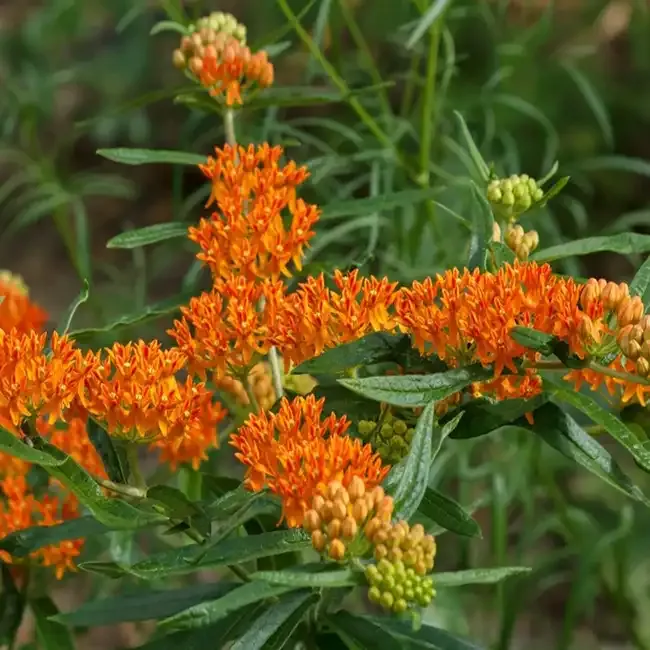
Butterfly Weed (Asclepias tuberosa) is a perennial plant native to North America, known for its vibrant orange, red, or yellow flower clusters. It typically grows between 1 to 3 feet tall and thrives in well-drained soils and full sun. Butterfly Weed is a gardener favorite for its low maintenance and drought tolerance.
Known for its striking orange blooms and ecological importance, Butterfly Weed (Asclepias tuberosa) is a perennial herbaceous plant adds color to gardens.
Botanical Overview
Butterfly Weed belongs to the genus Asclepias, commonly known as milkweeds. These plants are integral to the life cycle of the monarch butterfly. Unlike many of its relatives, Butterfly Weed does not exude a milky sap when cut, which is a defining characteristic of most milkweeds. Its scientific name, Asclepias tuberosa, hints at its robust root system, with 'tuberose' referring to the tuberous roots.
Appearance and Growth
This plant is renowned for its vibrant orange-to-yellow flowers that bloom in umbels from early summer into fall. The leaves are simple, opposite, and lance-shaped, with a smooth or slightly hairy texture. Butterfly Weed grows to about 1-3 feet tall and prefers full sun and well-drained soil, making it a hardy choice for gardens in USDA hardiness zones 3-9.
Ecological Importance
Butterfly Weed is praised for its role in supporting pollinators. Due to its nectar-rich blooms, the flowers are a magnet for butterflies, bees, and other pollinators. However, the monarch butterfly has a special relationship with this plant. Monarch larvae feed exclusively on milkweed species, including Butterfly Weed, making it essential for survival.
Cultivation Tips
- Planting: Butterfly Weed can be grown from seeds sown in late fall or early spring. Seeds need a period of cold stratification to germinate effectively.
- Soil Butterfly Weed thrives in sandy, loamy, or clay soils with good drainage. Once established, it's drought-tolerant, making it an excellent choice for xeriscaping.
- Sunlight: Requires full sun for best flowering and health.
- Maintenance: Once established, Butterfly Weed requires minimal care. Deadheading can promote more blooms, but leaving some seed pods will attract seed-eating birds and ensure propagation.
- Propagation: Besides seeds, Butterfly Weed can be propagated through root cuttings or division in spring or fall.
Landscape Uses
Butterfly Weed is not just ecologically beneficial but also aesthetically pleasing. It's an excellent choice for:
- Butterfly Gardens: Its name alone suggests its utility in gardens that attract butterflies.
- Wildflower Meadows: It blends seamlessly into naturalistic landscapes.
- Border Plants: Its bright flowers make it a striking border plant.
- Xeriscaping: Its drought tolerance makes it ideal for water-wise gardens.
Conservation and Considerations
While Butterfly Weed is not currently listed as endangered, the decline in milkweed populations across North America due to habitat loss and herbicide use has implications for monarch butterflies. Planting Butterfly Weed in gardens can contribute to conservation efforts by providing habitat and food for these insects.
